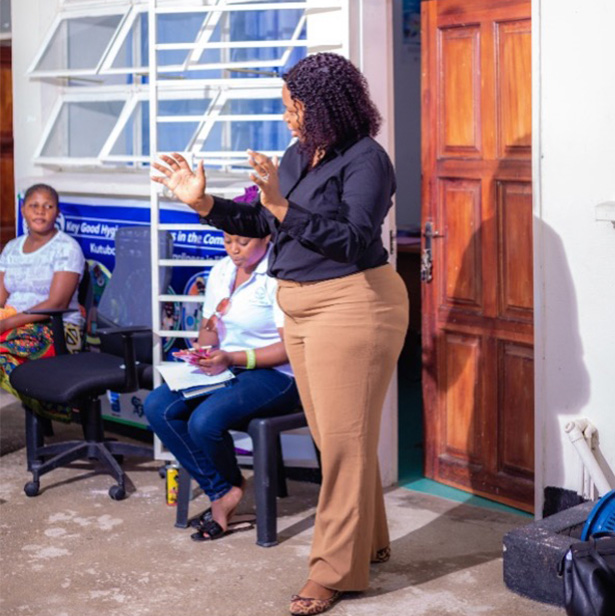
Kazungula district adolescent health focal point person providing health information to adolescents at Kazungula district hospital
Problem
Sub-Saharan Africa has one of the highest burdens of adolescent pregnancies in the world, with the rate twice the global average at 98 births per 1,000 girls[1][2]. As of 2020, Zambia ranked twelfth in Africa at 115 births per 1,000 girls[3]. Nearly 30 percent of Zambian adolescent girls get pregnant by the age of 18,[4] with the Eastern and Southern Provinces being some of the most affected. Limited access to family planning and information services, supported by social-cultural and structural drivers, are key drivers to the scourge of adolescent pregnancies. In addition, poverty also drives some girls to offer sexual favors in exchange for money, goods, and other services, contributing to teenage pregnancy. Even though there are family planning options available, most adolescents are unaware of these services.
Solution
The Government of Sweden, through the People at the Centre (PeaCe) health program in Eastern and Southern Provinces of Zambia, with technical support from the Clinton Health Access Initiative (CHAI), has been supporting the Ministry of Health (MoH), Zambia, to address this issue. A key strategy of the program to reduce adolescent pregnancies has been increasing access to quality adolescent health (ADH) information and behavior change communication using outreach and facility-based engagement models. The MOH, with CHAI support, has trained healthcare workers (HCWs) and peer educators (PEs) in providing people-centered adolescent, including sexual and reproductive health (SRH) and information services, at community and facility levels.
Results
Since the program started in 2021, the program has trained 420 HCWs and 1,163 PEs across the two provinces in adolescent health programming. At present, every facility in the provinces has at least one healthcare worker trained in ADH, from 38 percent in March 2021 to 66 percent by end of June 2023. Facilities with at least two peer educators trained in ADH have increased from 0 to 37 percent during the same period. The number of adolescents who have been reached by the HCWs and PEs since the program started has increased by over 34,600 in 2022 against an estimated adolescent population of 80,471. With continuous training and outreach efforts, the program aims to reach more adolescents to help reduce the rate of teenage pregnancies in the Eastern and Southern Provinces.
[1] https://www.statista.com/statistics/1234548/adolescent-fertility-rate-in-africa-by-country/#:~:text=Niger%20had%20the%20highest%20adolescent,1%2C000%20girls%20that%
[2] https://esaro.unfpa.org/en/topics/adolescent-pregnancy#:~:text=An%20estimated%2049%20million%20sexually,girls%20(UNFPA%2C%202021).
[3] https://www.statista.com/statistics/1234548/adolescent-fertility-rate-in-africa-by-country/#:~:text=Niger%20had%20the%20highest%20adolescent,1%2C000%20girls%20that%20same%20year.
[4] Zambia Statistics Agency, Ministry of Health (MOH) Zambia, and ICF. 2019. 2018 Zambia Demographic Health Survey Summary Report. Lusaka, Zambia: Zambia Statistics Agency, MOH, and ICF
[5] Ministry of Health. HMIS 2023





